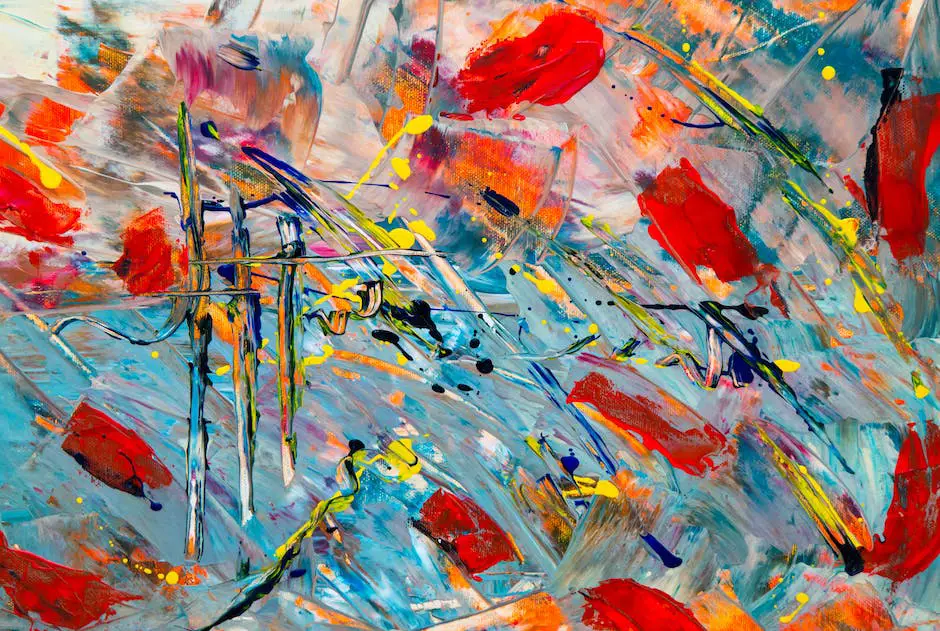Understanding Impressionist Artists: Their Style and Influence

Impressionism, a paradigm-shifting movement that surfaced in France during the late 19th century, offered a stark contrast to the rigid confines of traditional art. The pioneers of Impressionism, driven by a thirst to perceive the world anew, gave birth to a style that embraced ephemerality, casting aside set conventions for a looser, more fluid depiction of light, colour and the quotidian. Our journey delves into the cradle of this audacious movement, presenting an insightful exploration of its origins, the defining features of its unique style and techniques, and the indelible influence it is still exerting upon the contemporary art world.
The Emergence of Impressionism
The Pioneers and Origins of the Impressionist Movement: A Creative Edge
An artist’s palette basks in a kaleidoscope of colours. Flecks of paint dance like confetti on a canvas, borne from the simple urge to capture a moment, a mood, a sliver of fleeting light. Welcome, dear readers, to the world of the Impressionists, a group of inimitable artists whose influences and works shadow the boundaries of artistic expression to this day.
The Impressionist movement, as we now know it, arose in the 19th-century France out of thin air as a fresh, spontaneous breath away from traditional fine art, and in an atmosphere pulsating with artistic rebellion. Lurking in the womb of innovation, the movement was stoked by a collective of artists yearning to break free from the shackles of academic art’s vivid detail, narrative pull and meticulous composition. They sought instead the immediacy of the moment; of light playing on surfaces; of the world’s everyday beauty, all distilled down to its most basic yet dazzling elements, etched out in bold and vibrant strokes.
Anchoring this artistic rebellion was an array of talented painters, each bringing their unique vision to the canvas. From the likes of Claude Monet, with his exquisite treatment of light and shadows; to Edgar Degas’ unflinching focus on the anatomy in movement; to Édouard Manet’s renowned ability to turn the mundane into the magnificent; the Impressionist movement celebrated a vibrant community of masters.
Monet, often hailed as ‘the father of Impressionism’, captures the essence of the movement with luminescent landscapes cloaked in his signature loose brushwork. A splendid example of this style is his painting of Le Havre, ‘Impression: Sunrise’, from which the term ‘Impressionism’ was derived, capturing the quiet essence of the harbour in the grips of dawn.
In stark contrast to Monet, Degas championed the backstage voyeuristic view into the world of ballet and horse racing. His innovative compositions and experiments with off-centre framing were considered groundbreaking. Pieces like ‘The Dance Class’ or ‘At the Races’ encapsulate the sheer dynamism and immediacy of the moment, defining characteristics of the Impressionist philosophy.
Edouard Manet, often called the bridge between Realism and Impressionism, cannot be overlooked in any exploration of this period. Manet’s works, like ‘Olympia’ and ‘Bar at the Folies-Bergère’, portrayed modern life in an unconventional and evocative style, challenging accepted norms and creating ripples that resonated through the artistic world.
The Impressionists, a vibrant montage of unique individualities bound by their common zeal for innovation, offered us a fresh perspective on art. Impressionism veered away from intricate realism towards the portrayal of fleeting instances, the play of light and colour, and the nuance of atmospheric effect.
And so, dear readers, we find ourselves enlightened by this brilliant movement that stands where it began: at the spectacle of beauty in the ordinary, the allure of the fleeting moment and the magic of light that dances at the tip of a brush held by an artist, overcome not so much by the impression of a place as by the place of an impression. Through the lens of Impressionism, we are encouraged to see, not merely look, and in doing so, discover new vistas of aesthetic pleasure.

The Style and Techniques of Impressionist Art
Diving deeper into Impressionism’s impactful departure from convention, the salient difference lies in the shift in perceptual perspective and the audacious experiment in techniques, distinguishing itself from traditional art movements.
Impressionism called for a novel understanding of sight and perception. Traditional art forms prior to Impressionism obeyed fixed perspectives, often resembling reality through a single, fixed viewpoint. Conversely, Impressionist art shattered the singular vantage point. Artists began lingering more on immediate impressions, weaving a symphony of fleeting moments into one artwork. This innovative visual lens introduced a seismic shift in artistic expression and has influenced an array of subsequent movements.
The bold brushstrokes technique, a distinctive trait of Impressionism, is further testament to the movement’s divergence. Rather than meticulously painting minute details, Impressionists employed rapid, unfettered strokes. This play on brushwork, capricious and unencumbered, served to capture the essence, the ‘impression’ of their subject matter. For Impressionists, the idea was to mirror the transience and fluidity of life, to mimic the ephemeral nature of sensory experience.
A radical departure from predecessors was also witnessed in the palette used by Impressionists. Opting for a brighter, more vibrant array of colours; the Impressionists liberated their palette from the darker, muddier hues that had dominated previous artistic eras. The pursuit of authentic visual sensation led them to experiment with the primary colours, exuding fresh vibrancy and warmth onto the canvas.
Impressionists were also pioneers in painting en plein air, that is, in the outdoors. This was a stark contrast to previous art practices which were largely confined to indoor studios. Artists like Monet and Renoir were renowned for their plein air studies, finding inspiration in nature’s ever-changing light and atmospheric conditions. This, in turn, granted their compositions an impulsive immediacy and vivacity, further enriching Impressionism’s unique aesthetic.
An emphasis on ordinary subject matter also rendered Impressionism indisputably innovative. While historical or mythological scenes preoccupied traditional art, Impressionists preferred painting modern life with its everyday scenes and common folk. Their canvases came alive with boulevards, gardens, cafes, and other glimpses of contemporary life, bringing the ordinary and the overlooked to the forefront of the art scene.
In its essence, Impressionism was born from the quest to manifest raw visual sensation, to soar above the stark realism and evoke ephemeral moments blending sight and insight. Indeed, as voiced by the legendary Renoir, “One must from time to time attempt things that are beyond one’s capacity.” In this spirit, Impressionism dared to venture beyond, creating a seismic ripple in the realm of creative expression, forever changing the landscape of visual art.

Influence and Legacy of Impressionist Artists
Undeniably, Impressionism has revolutionised the artistic landscape, uprooting established norms and shedding new light on the manner in which art ought to be appreciated. Beyond the stroke of the brush or the hue of oil paints, the very soul of this audacious art movement can be traced back to witnessing the transient beauty of life – a value that resonates in modern art on a profound level, making Impressionism as relevant today as it was during the late 1800s.
Impressionist artists’ fascination with openness, spontaneity, and visual authenticity translated into bold experimentation with technique and material, a legacy that still appealed to contemporary artists. Unlike the rigid structure of Realist or Classical art, Impressionism’s free form allowed contemporaries greater flexibility in their creative expression, expanding the artistic palette in ways hitherto unimagined. From the likes of Jasper Johns to David Hockney, the spirit of Impressionist experimentation reappears, breathing life into the canvas of contemporary art.
The celebration of the everyday, previously shunned in favour of grand historical contexts, found acceptance through Impressionism. This gave artists the freedom to explore through their work the nuances of quotidian life. Today’s societal portraits, from the graffiti art of Banksy to the snapshot aesthetics of Martin Parr, owe this shift to the practice of artists like Pierre-Auguste Renoir and Berthe Morisot.
Furthermore, the Impressionists’ pioneering move away from the studio to the outdoors imparted a fresh dynamism to the depiction of natural scenes. It shapes the present art scene, wherein artists embrace varied landscapes, allowing the spirit of places to seep into their work through the practice of plein air painting. The love for natural light in Impressionism is echoed down the corridors of Contemporary Art — be it in Olafur Eliasson’s beautiful light installations or James Turrell’s immersive explorations of illumination.
Most notably, Impressionism’s revolutionary take on perspective — favouring the subjective, individual viewpoint over the objective reality — easily became one of its greatest gifts to the art world. This unprecedented shift empowered each artist to create their own distinctive aesthetic language, unbound by inherited artistic conventions. Today, it steers the explorations of many contemporary artists, from the surreal visions of Salvador Dalí to the fragmented, multi-perspective canvases of David Hockney.
The legacy of the avant-garde Impressionist movement goes beyond its groundbreaking techniques and concepts. It lies in the invitation to continually perceive anew, to uncover beauty in the previously overlooked, to pursue personal experiences, and to engage in relentless experimentation. From the subtle brushstroke to the grand depiction of light and life, it is undeniable that Impressionism has forever left an indelible mark on the world of art, a virtue to be echoed and celebrated in contemporary art and beyond.

Far from a mere historical artefact, Impressionism’s enduring influence spans across a myriad of subsequent art movements, becoming an integral cog in the evolution of visual art. Many contemporary works continue to carry echoes of the revolutionary style, testament to the lasting power of the Impressionists’ groundbreaking approach to visual narrative and technique. By challenging the status quo, these trailblazing artists have redefined the boundaries of creative expression and etched an indelible mark into the annals of art history that continues to reverberate into the modern day.
Recommend0 recommendationsPublished in Art Movements







